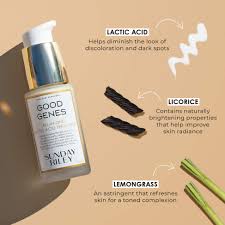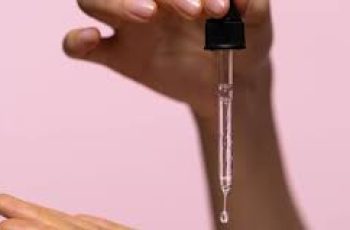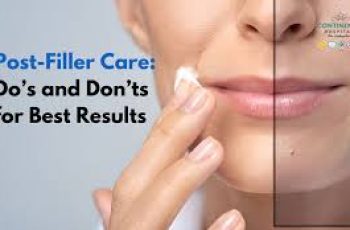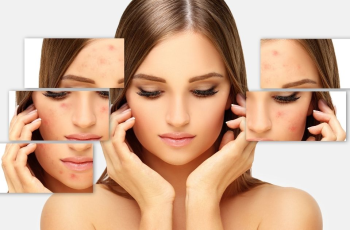
.webp)
.webp)
.webp)
The Lactic Acid Revolution: A Personal Journey with Sunday Riley’s Good Genes
.webp)
.webp)
Lactic acid has become one of the most beloved ingredients in skincare, and for good reason.
.webp)
.webp)
.webp)
This alpha hydroxy acid (AHA) is milder than many of its counterparts, making it suitable for a wide range of skin types.
.webp)
.webp)
Derived from fermented foods like kefir, it has remarkable surface exfoliating properties. Lactic acid gently removes dead skin cells, while promoting smoother, more radiant skin.
.webp)
.webp)
.webp)
It’s also known for its ability to reduce the appearance of fine lines and hyperpigmentation.
.webp)
.webp)
As a newbie to lactic acid, I decided to put one of the most popular products on the market to the test: Sunday Riley’s Good Genes All-in-One Lactic Acid Treatment.
.webp)
.webp)
.webp)
This product is a favorite at Byrdie HQ, so I was excited to try it myself.
.webp)
.webp)
I used it every day for two weeks, and the results were noticeable—my skin texture, radiance, and moisture levels improved, and my dark spots and fine lines began to fade.
.webp)
.webp)
.webp)
But the real question is, does this exfoliating, plumping serum live up to the hype? Keep reading to find out.
.webp)
.webp)
A Closer Look at My Skin and Concerns
.webp)
.webp)
.webp)
Before diving into my experience with Good Genes, let me tell you a bit about my skin. I have normal-to-oily skin, with occasional fine lines around my eyes.
.webp)
.webp)
My skin fluctuates between normal and oily depending on the season, especially in the summer.
.webp)
.webp)
.webp)
During this time, I also tend to get clogged pores and occasional blemishes—particularly now that I wear a mask every time I leave the house.
.webp)
.webp)
Texture has always been a major concern for me. My skin rarely feels smooth, regardless of whether it’s oily, dry, or somewhere in between.
.webp)
.webp)
.webp)
Additionally, I have sun damage from years of tanning in my teenage years, which left me with freckle-like dark spots on my cheeks.
.webp)
.webp)
I usually shy away from using acids because of past experiences with harsh ingredients. I’ve had some severe reactions to stronger acids before, and lactic acid was new to me.
.webp)
.webp)
.webp)
With fine lines beginning to appear around my eyes (hello, 30!), I figured Good Genes might be the right choice for trying a daily AHA treatment.
.webp)
.webp)
Since Good Genes can be used both day and night, I chose to incorporate it into my evening skincare routine, ensuring I didn’t risk any irritation during the day.
.webp)
.webp)
.webp)
My Routine with Good Genes: A 14-Day Experiment
.webp)
.webp)
To kick off the experiment, I spritzed Maison Jacynthe Rose Petal Water on my clean skin to prepare it for treatment. After letting it absorb, I applied a generous layer of Good Genes All-in-One Lactic Acid Treatment to my face and neck. Then, I followed up with a moisturizing cream, opting for Haoma’s Recovery Night Cream to lock in moisture.
.webp)
.webp)
.webp)
Since the product is gentle enough for daily use, I applied it every night for the full two-week trial. The consistency is lightweight, and the serum absorbed quickly into my skin without leaving any sticky residue.
.webp)
.webp)
What’s Inside: Key Ingredients and Their Benefits
.webp)
.webp)
.webp)
The star ingredient in Good Genes is lactic acid, a naturally occurring AHA that works to exfoliate the skin. It helps remove pore-clogging dead skin cells from the surface, revealing fresher, more radiant skin.
.webp)
.webp)
Lactic acid is also known to support the skin’s moisture retention, which is crucial for maintaining hydration.
.webp)
.webp)
.webp)
In addition to lactic acid, Good Genes contains several plant-based ingredients designed to enhance its effects.
.webp)
.webp)
For example, licorice extract is included for its ability to fade dark spots and even out skin tone, while lemongrass has a brightening effect that further helps to reduce discoloration.
.webp)
.webp)
.webp)
Together, these ingredients target multiple skin concerns, such as uneven skin tone, fine lines, and dryness.
.webp)
.webp)
Furthermore, lactic acid is known for its ability to fight acne-causing bacteria, making it a great option for those prone to blemishes.
.webp)
.webp)
.webp)
Day 1-7: The Initial Week
.webp)
.webp)
In the first few days, I noticed a subtle improvement in skin texture. The roughness that had been a consistent issue for me began to diminish, and my skin felt softer and smoother.
.webp)
.webp)
.webp)
I also noticed a slight radiance boost—my skin looked a little more glowing in the morning, even without makeup.
.webp)
.webp)
There was no irritation during the first week, which was a pleasant surprise. I expected some stinging or redness, especially since I had experienced reactions to stronger acids in the past.
.webp)
.webp)
.webp)
But the product’s gentler formulation didn’t cause any discomfort.
.webp)
.webp)
At this stage, I didn’t notice dramatic changes in my fine lines or dark spots yet. However, my skin did appear hydrated, which is often a concern for me, particularly as I’m transitioning into my thirties.
.webp)
.webp)
.webp)
Day 8-14: Visible Results
.webp)
.webp)
By the second week, the changes in my skin were more noticeable. My dark spots started to fade, and my skin tone looked more even overall.
.webp)
.webp)
.webp)
The freckle-like dark spots on my cheeks were noticeably lighter, and the texture was smoother.
.webp)
.webp)
Fine lines, particularly around my eyes, also seemed reduced—they weren’t gone, but the appearance of them had certainly softened.
.webp)
.webp)
.webp)
This is something I appreciated, as I was hoping Good Genes would help with these early signs of aging.
.webp)
.webp)
The Science Behind the Results: How Lactic Acid Works
.webp)
.webp)
.webp)
Lactic acid’s ability to exfoliate is at the heart of its skin benefits. By sloughing off dead skin cells, lactic acid helps your skin renew itself more quickly, allowing fresh, new cells to surface. This is why lactic acid is great for tackling concerns like fine lines, dark spots, and texture.
.webp)
.webp)
Moreover, lactic acid also boosts cell turnover, which is key in anti-aging treatments. Over time, this increased cell turnover can reduce the appearance of wrinkles and promote a healthier, more youthful complexion.
.webp)
.webp)
.webp)
Since lactic acid also has hydrating properties, it’s especially beneficial for those with dry or combination skin.
.webp)
.webp)
It ensures that skin remains moisturized while being exfoliated, reducing the risk of irritation compared to harsher AHAs.
.webp)
.webp)
.webp)
How to Layer Your Skincare: A Step-by-Step Routine
.webp)
.webp)
If you’re new to lactic acid or just looking for a smoother routine, here’s a morning skincare guide that you can follow.
It’s ideal for people with busy mornings but still want to get the benefits of a solid skincare regimen.
Step 1: Cleanse
Start with a gentle cleanser. If you have oily or acne-prone skin, opt for one that contains salicylic acid to keep pores clear.
Step 2: Toner (optional)
A toner helps to balance the pH of your skin and remove any lingering impurities. If you’re aiming for brighter skin, use a toner with lactic acid or other exfoliating agents.
Step 3: Serum/Treatment
This is where you’ll use a product like Good Genes. After applying your serum, let it fully absorb into your skin before moving on to the next step.
Step 4: Eye Cream (optional)
If dark circles or puffiness are a concern, apply a brightening eye gel. Gently pat it in around the eye area to reduce swelling and refresh tired eyes.
Step 5: Moisturizer
Choose a moisturizer that fits your skin type. If you have oily skin, opt for a lightweight formula. Dry skin types should go for something more hydrating.
Step 6: Sunscreen
This step is non-negotiable. Always finish your morning routine with SPF to protect your skin from UV damage and further pigmentation.
Final Thoughts: Is Good Genes Worth It?
After using Sunday Riley’s Good Genes for two weeks, I can confidently say that the product lived up to its reputation.
My skin is smoother, more radiant, and more even-toned, and I noticed a significant improvement in my dark spots and fine lines.
If you’re looking for a gentle yet effective way to exfoliate, brighten, and hydrate your skin, Good Genes might be the perfect addition to your skincare routine.
Just be mindful of any irritation if you have sensitive skin, and always use sunscreen in the morning since AHAs can make the skin more sensitive to the sun.
Have you tried Good Genes or any other lactic acid treatments? Let me know about your experiences or if you have any questions!



